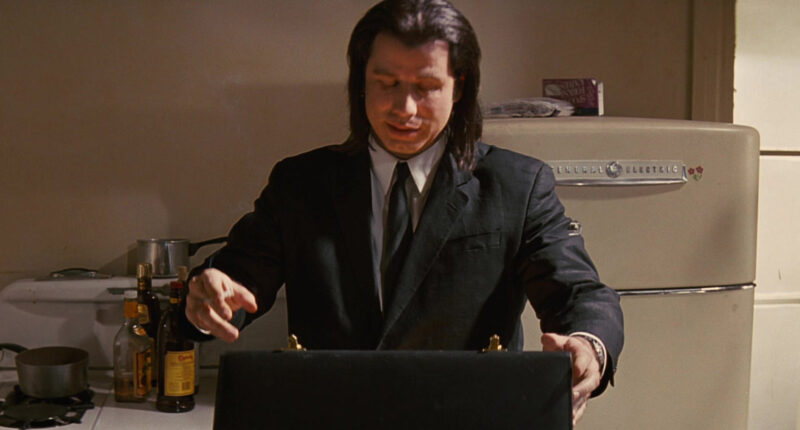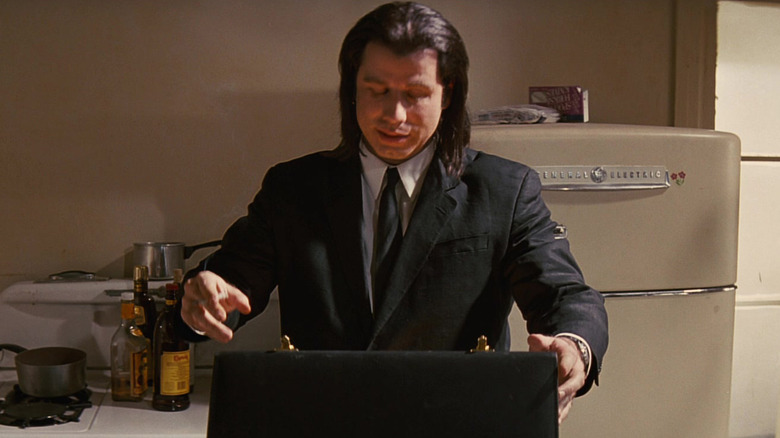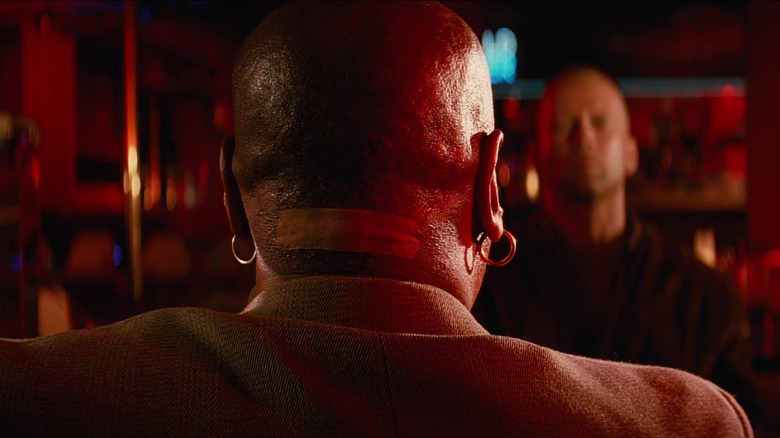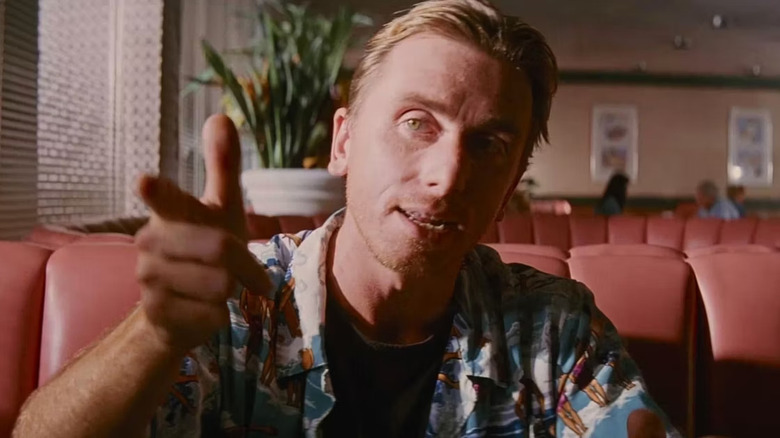Share this @internewscast.com
We may receive a commission on purchases made from links.
The year 1994 brought cinema lovers numerous classics like “Clerks,” “The Lion King,” “The Shawshank Redemption,” and “Forrest Gump.” In this year, Quentin Tarantino’s crime thriller “Pulp Fiction” also made its debut. A collection of tales set against the backdrop of Los Angeles, it captivated both critics and audiences. Despite its acclaim, it fell short at the Oscars, losing the best picture award to “Forrest Gump,” with Robert Zemeckis taking the best director honor. The movie consists of seemingly random scenes, which were originally intended to include one particularly off-putting scene that was later cut. The story is intertwined with certain plot elements, such as a mysterious briefcase owned by gangster Marsellus Wallace (Ving Rhames).
The briefcase serves as a classic cinematic MacGuffin—an object central to the storyline yet enigmatic to the viewers. Marsellus’s henchmen, Jules Winnfield (Samuel L. Jackson) and Vincent Vega (John Travolta, whose career was revitalized by the film), introduce viewers to the case as they recover it from a group of young men who had taken it. It’s in this sequence that Jules delivers his iconic biblical monologue for the first time.
The combination to unlock the case is “666,” and it emits a warm yellow glow when Vincent opens it. Apart from these details, its significance is primarily due to its immense value to Marsellus, and thereby to Jules and Vincent. Within the film, its contents are never explicitly revealed, with Jules jokingly suggesting it holds his boss’ “dirty laundry.” Over the past three decades, much speculation has surrounded the briefcase’s contents, supplemented by a few confirmed insights, which we have compiled below.
Filmmakers intentionally left the briefcase a mystery
A handful of clues from the film gave rise to a popular fan theory that Marsellus Wallace’s soul was in the briefcase, speculation that was bolstered by a large band-aid affixed to the back of Ving Rhames’ neck in the scene where Jules and Vincent deliver the case to him. The idea was that the devil may have extracted Wallace’s soul through the base of his neck, but the truth behind the band-aid is that Rhames wanted to conceal a cut he suffered from shaving his head from the cameras.
In Roger Ebert’s 1997 book, “Questions for the Movie Answer Man,” “Pulp Fiction” co-writer Roger Avary explained that he and Quentin Tarantino purposely left the contents of the briefcase a mystery to plant a seed in the minds of viewers. “No prop master can come up with something better than each individual’s imagination,’ he said. “At least that was the original idea. Then somebody had the bright idea (which I think was a mistake) of putting an orange lightbulb in there … Didn’t need to push the effect. People would have debated it for years anyway, and it would have been much more subtle.”
Tarantino confirmed their intent in a 2009 interview with Charlie Rose, saying, “I like the idea that you open up the briefcase in ‘Pulp Fiction,’ and I don’t tell you what’s in there, but it’s up to you to figure out what’s in there, and now that’s your movie.” As for what was actually in the prop case that Vincent and Jules lug around for much of the film, according to Samuel L. Jackson, it was just a couple of light bulbs and batteries to power them.
One Pulp Fiction actor knows the truth about the briefcase
While Quentin Tarantino publicly remains obtuse regarding the contents of Marsellus Wallace’s briefcase, he did reveal its secrets to Tim Roth, who played petty criminal Pumpkin in “Pulp Fiction.” But when asked about it by Variety, the actor said, “We tend to know only as much as [our character] would know, but one thing that I do know because my character would know, which is what’s in the suitcase. But Quentin asked me not to mention it.”
Quentin Tarantino told Ali Plumb of BBC 1 radio, “Unfortunately, the whole idea while I didn’t tell people what was in the suitcase was so they would come up with it on their own, but nobody wants to do that, they just want to know what I think. And I don’t give a damn what I think, I want to know what other people think.” He revealed that of the countless people who have approached him to ask that question, only a handful have offered their thoughts on the matter — which disappoints him, since he said he’s actually very interested in hearing what the film’s fans believe is in the case.
It’s possible that only Tarantino, Roger Avary, and Tim Roth truly know what was in the briefcase, but be sure to let the director know your impressions should you ever have the opportunity. Maybe he’ll even let you know if you’re close to figuring it out.












